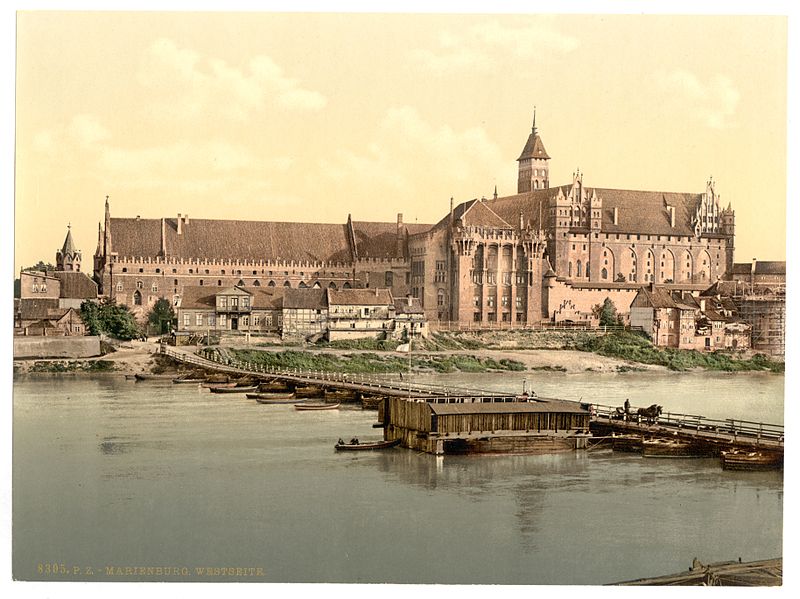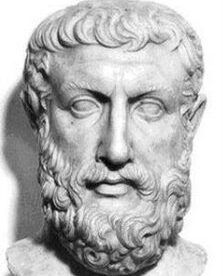
Marienburg from the west side, Prussia, Germany (now Malbork, Poland) circa 1890-1900
In the year of our Lord 1280 the castle of Zantir was moved to its present site and is now known as Marienburg in praise and honor of the ever-virgin Virgin Mary.
(198)
Available from Amazon
Book Length: 301 pages
Here lies both a valuable window into the past and also an incredible source of inspiration for us who confess the same faith that these great knights did. To those unfamiliar with reading historical chronicles, the writing style of this book will appear somewhat jarring to the eye at first, but one gets used to it after some time. Interspersed within the narration of many raids, battles, and sieges are remarkable examples of Catholic heroism and fascinating accounts of obscure miracles in the lands of Prussia and the Baltic, then Christendom’s mysterious frigid Northern frontier.
Though such miracles were not formally commented on by Rome, I add here these sage words of St. Louis de Montfort on how to approach such private revelations:1
I agree that we must be neither too credulous nor too critical and that we should remember that “virtue takes the middle course”—keeping a happy medium in all things in order to find just where truth and virtue lie. But on the other hand I know equally well that charity leads us to believe all that is not contrary to faith or morals: ‘Charity…believeth all things;’ in the same way pride induces us to doubt even well authenticated stories on the plea that they are not to be found in the Bible.
(The Secret of the Rosary, 32)
With this guidance in mind, one can ask God for divine charity, fruitfully read such pious stories, and be filled with an increase of this virtue afterwards. Take for example this story about Brother Hermann Sarrazin, a knight of the Order who had immense devotion to Our Lady:
He was riding to the ceremony where he would receive the habit and the blessing and on his way there he came across many knights practicing their skills on a meadow: jousting, fighting with spears, dueling on horseback, and engaged in tournaments. When he came close to them he saw one knight in the arena equipped with all his weapons and all the trappings of a knight, both man and horse fully caparisoned in chivalric regalia, in front of whom a herald was calling out whether anyone there was so bold and skillful that he would engage in a joust for a prize and in honour of his lady. When Sarrazin heard this he made his mind up. He put his trust in the tender maiden he had chosen and in whose service he had dedicated himself, I mean Mary of course. In the name of the pure Virgin he marched into the arena, confidently attacked the knight, unseated him with his lance at the first attempt and knocked him to the ground. He gave the arms and the horse to the poor and rode away.
(130)
This is only one of the many references contained in this book concerning the relationship between the Order and its members to the Blessed Virgin Mary. Without a doubt it was she, who Jeroschin terms “our commander”, and says of her that she “graciously honors all those who suffer in her name” (101) who granted the Order their ultimate victory over paganism in those lands. And what incredible odds were stacked against them! One really gets a sense of it when reading through the great number of saddening accounts of raids and massacres committed by the heathen against Christian towns and castles, yet as the author himself relates of the “early days” of their righteous colonization, “No-one can adequately describe the misery and hardship the brothers and other Christians suffered in the early days of Prussia: they were short of clothing, food and drink and everything needed to sustain life” (87). Yet, Jeroschin relates to us that men did not forget God amid these trials, rather that:
…God’s grace was so great in them and so filled their hearts that they were happy and joyful to suffer these things in the name of the dear Christ Jesus, in whose name they gladly and unhesitatingly drank the bitter cup of martyrdom.
(Ibid)
Moreover, Catholics in our times have much to learn from the doctrine of the Order, expounded through Jeroschin, on the subject of warfare. Spiritual warfare and physical warfare have a harmony to them that has been discarded in an age that finds itself besieged by a spirit of materialistic pacifism on one end and an unhealthy fascination with violence and gore on the other. Jeroschin gives us a proper and refreshing Catholic view, for he describes the warfare of the Order as being “a new form of warfare, for the enemy is overcome not only with physical weapons, but also spiritual weapons, like prayer” (50). To the ire of every Quaker and other similar heretics who hide behind the name of Christ but believe in him so little that they consider it sinful to take up arms in His Name, the author cites Holy Writ to prove his argument:
We read that Moses prayed while the Israelite army was fighting the Amalekites and the army was victorious while he was praying and when he stopped praying the Amalekites won. Solomon says of him that he defeated the army not by force of arms or by physical strength but by words of prayer.
(Ibid)
The Order proved these words true through their deeds, for as this chronicler records, during one of the Prussian revolts a certain elder of the pagan Sambian tribe slipped into a castle held by the Knights, in order to spy on them and to discover their way of life so that he could relate their weaknesses to his people. However, when he managed to return to his fellow Sambians, he expressed words not of cheerful intrigue, but of defeat. For as he describes in this retelling, his witness to the “custom” of the knights of rousing themselves during the night to meet in their chapel to pray the Office, alongside their hearing of Mass and praying the hours of the day was enough for him to say to his people that the Knights would certainly prevail against them (124). The man’s prediction was proven right in the end.
This venerable Order, then, ought to be studied and better treasured by Catholics, especially those who call themselves Knights of Our Lady. I am, of course, referring to the Militia Immaculata, whose work would greatly be aided by looking back to the wisdom of these first knights of Our Lady, which has thankfully survived and has come to us in the English speaking world by means of this wonderful volume. It is a great shame that the good name of these Knights is often dragged in the mud by those who, at the same time, write the history books about them. I prayerfully hope that a day will soon come when Catholic historians shall boldly step forward to reclaim and defend the patrimony of these our spiritual forefathers, and transmit their lessons to the next generation.
